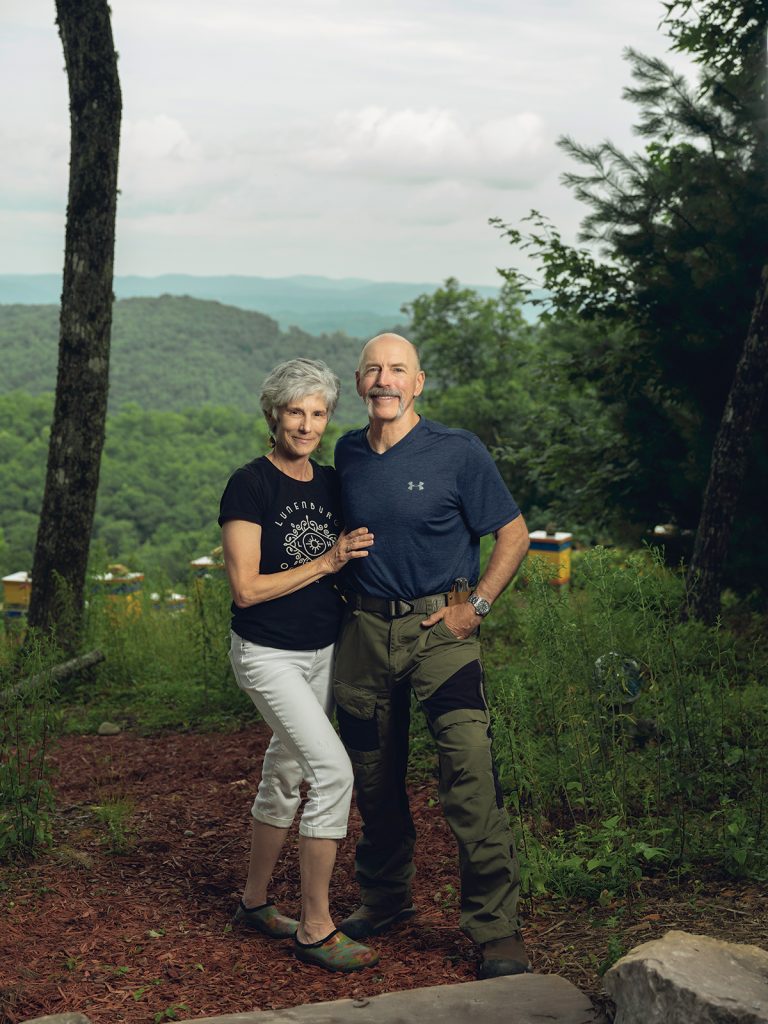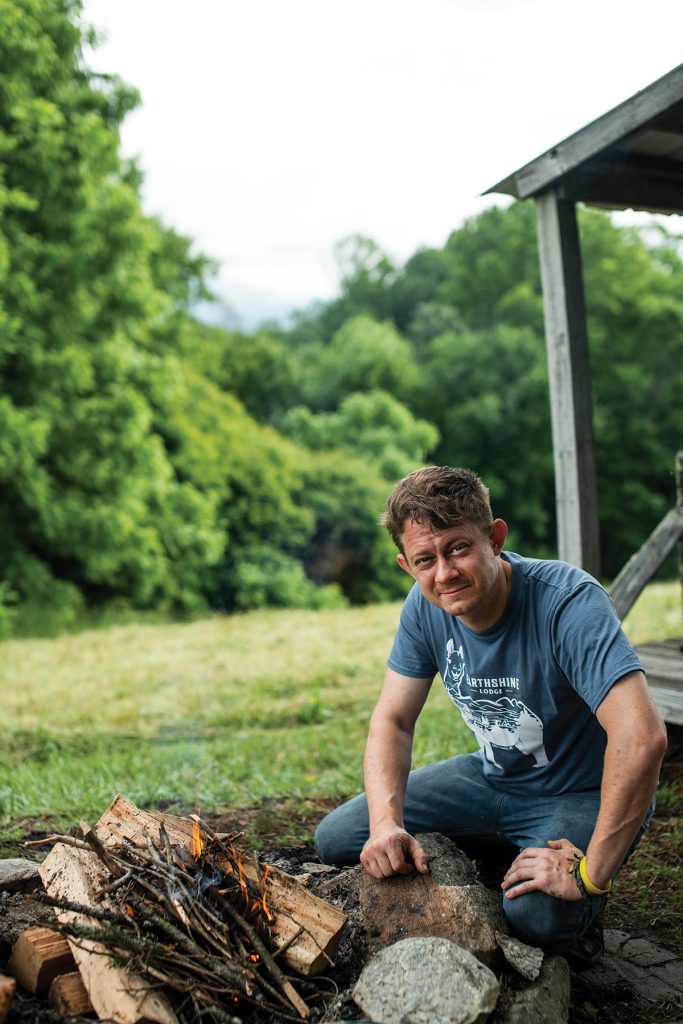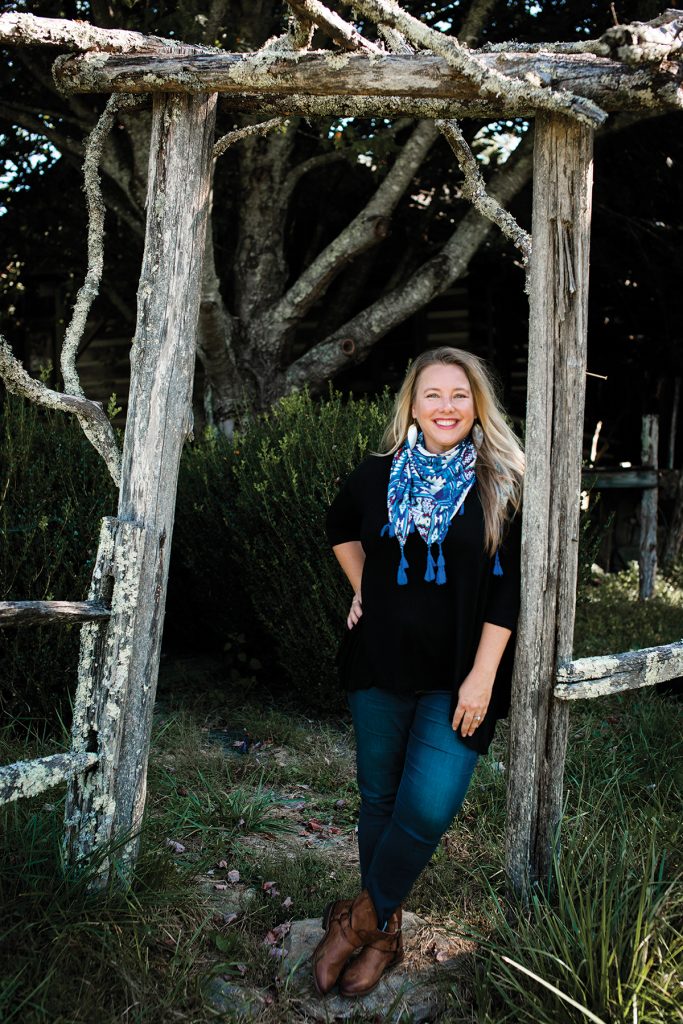Why making high-end honey is a science and a duty

HONEY SNOBS FOR LIFE
Denise Altay and Sean Collinsworth have branded the royal recipe for agritourism.
Photo by Amos Moses
There’s something inherently sensual about Killer Bees Honey, an ultra-pure, all natural, sublimely rich artisanal nectar created in a remote pocket of Pisgah National Forest. (GPS won’t get you there.)
When mated beekeepers Sean Collinsworth and Denise Altay talk about their “hive girls” (most bees are female), the word “passion” is said often in jest — and just as often in sincere commitment. Their mission is to produce one of the purest honeys on the planet, and to protect the natural environment in which it’s made.
Thinking back to 2017, Altay says, “When we started this little business, I said, ‘This is all new to me. We’ll sell honey online and that will be it. This cannot take over our lives.’ Beekeeping was [Sean’s] passion.”

GPS WON’T GET YOU THERE
High elevation in a secret location is a big reason for the legendary purity of Killer.
Photo by Amos Moses
Until then, Altay had been a senior finance vice president with a large nonprofit agency in New York City for 30 years. Collinsworth was a Los Angeles County Sheriff for 25 years, with a long-standing passion for bees that dates back to his early years as a beekeeper in the Midwest.
“She’s the brains of the operation,” Collinsworth admits. “She’s a strategist and the main reason for our success: her ability to have an idea and to execute it.” He tempted her with the title of CFO for their company of two.
In the scheme of beekeeping, Collinsworth and Altay don’t make a lot of honey. On average, they decant 2,000 to 3,000 bottles a season. Worldwide, the business of honey production is on the decline but still cranking out more than 1.75 million metric tons a year — much of it adulterated with everything from rice syrup to pesticides.

From keeping the peace to keeping the bees: Sean Collinsworth used to be a sheriff in LA.
Photo by Amos Moses
Killer Bees Honey is stringent about purity. On their website, they state, “We are the only beekeepers in the United States who send their honey to be analyzed for purity of content by Intertek in Germany and Sweetwater Science Labs in Missouri, then publish the reports online.”
Consider that 12 ounces of the “Queen’s Reserve Sourwood Honey” is $40, sold in Italian-made glass flasks, and branded with a picture of the long-legged queen bee with spiked high heels and a come-hither pose atop the hive. It is tagged: “Pure, Natural, Uncensored.” (The Queen’s Reserve came available in early July and sold out within a few days. Their other honeys sell for about $20 per bottle.)
The couple is quick to point out that honey should be more than just sweet. It has inherent nuances much like wines, and locally, those naturally emerging flavors include mountain wildflowers, clover, and sourwood.
Even though they ship their honey to connoisseurs the world over, the couple knows that supply and demand for high-end honey can generate only a very limited market. So, from May through August, they offer four-hour tours of their home/business and hives on Fridays and Saturdays, for $110 per person. The tours start in the couple’s mountaintop home with a one-hour high-level discussion about bees, with emphasis on sustainable biodiversity, conservation, and the importance of pollinators to worldwide agriculture and food supply.
Presumably ignited with a new passion for all things bee-related, guests then don beekeepers’ suits (covered head to toe) and are taken to visit the hives. The experience is hands on, with guests actually pulling bee- and honey-laden frames out of the hives for inspection. They search for queens and get to pour themselves four-ounce souvenir bottles of honey for keeps.
After this intimate visit with the queens and their buzzing minions, guests then head back to the house for a culinary repast in the fashion of wine tastings. Each honey is paired with selected fruits, cheeses, meats, and crackers. The goal is to savor the different honeys and appreciate distinct colors, scents, and flavors.
“It’s an eye-opening experience,” Altay says. “Many people have never tasted real honey before, thinking it’s just sweet, when in fact it’s so much more.”
Finally, guests venture into the “honey house” to learn how artisanal honey is processed. At the end, Altay tells them they are now “amBEEsadors,” and galvanizes her newly learned subjects to spread the word about the superiority of a truly unadulterated product.
“Yes, we are honey snobs,” says Altay, who has an understandable disdain for commercial honey with suspicious enhancements.
“Why would someone flavor a honey,” she remarks rhetorically, “unless it’s not perfect?”
Killer Bees Raw Smoky Mountain Honey, Lake Toxaway. For more information about tours and products, see killerbeeshoney.com.




Congrats on your new venture Sean; a retired Canadian RCMP Corporal who I used to know on Vancouver Island now does the same thing as you’re doing. My mom used to love your segments on COPS, she’d be amazed too. I now live happily in AZ with my wife and pets, we love honey and wonder if you ship orders out to customers? Thanks much!